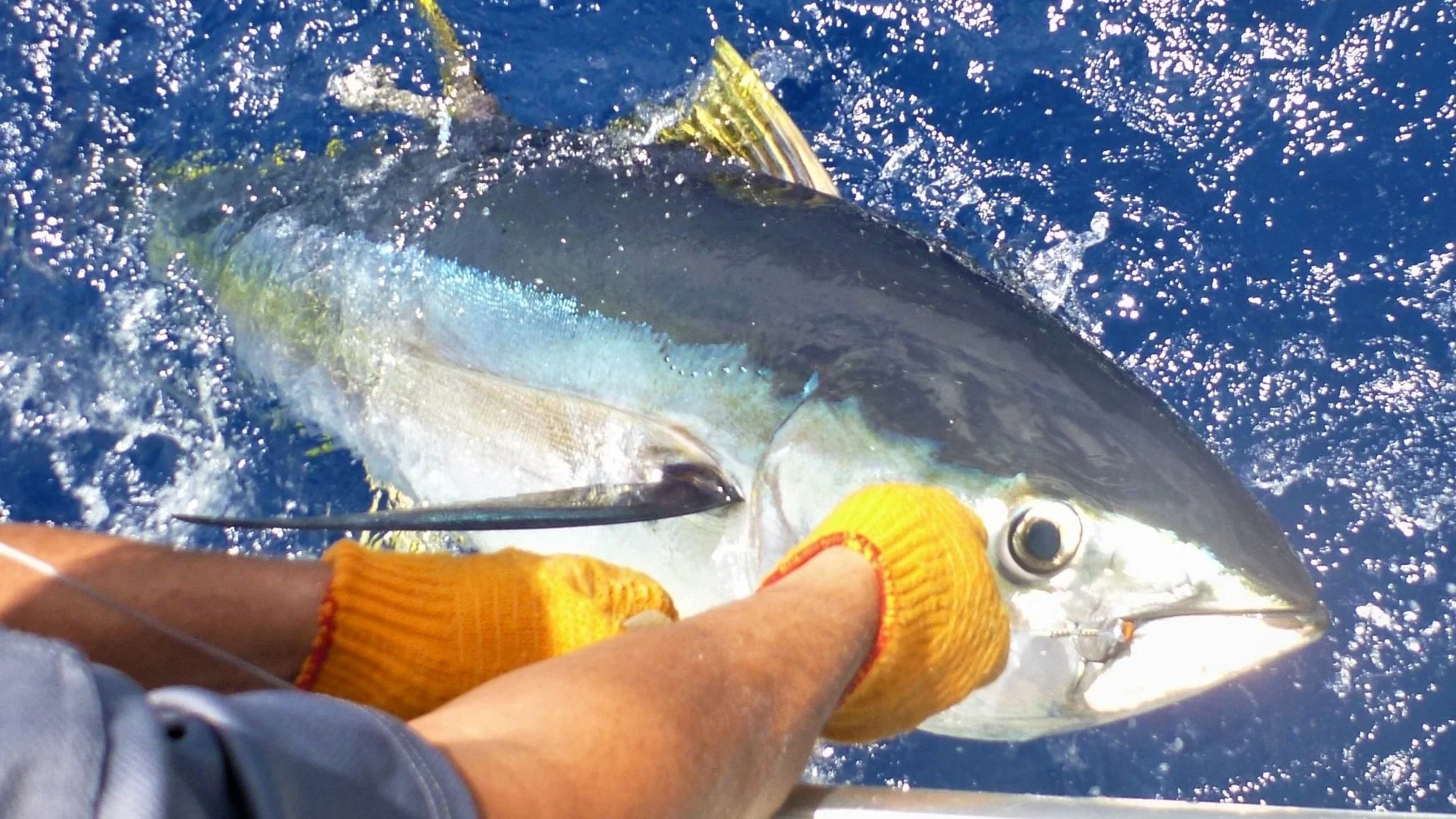Ahi Tagging Project
Ahi (Yellowfin and Bigeye Tuna) Satellite and Conventional Tagging Projects
Working with Atlantic Bluefin scientist Dr. Molly Lutcavage, Director of the Large Pelagics Research Center (LPRC), UMass Boston School for the Environment, PIFG successfully launched a new tuna tagging project on the island of Kauai and in the Hawaiian Islands between 2014-2016 with support from the Western Pacific Fisheries Council. A total of 14 pop up archival satellite or PSAT tags were placed on yellowfin and bigeye tunas ranging in size from 100 to 180 pounds. A number of experienced Hawaii longline and Kauai-based boat captains assisted the tagging efforts.
The project was funded through a NOAA Cooperative Research grant that supported the opportunity to place more PSAT tags in adult bigeye and yellowfin tuna. Five of those PSAT tags were generously donated by the Western Pacific Fisheries Council and five by the LPRC. The total number of PSAT deployed on yellowfin tuna to 11 and 3 on bigeye tuna. Information on the more recent tagging efforts will be made available once PIFG receives data from these tags. The PSAT tags record light levels (used to estimate daily geo-location), temperature and depth for twelve months. The PSAT is programmed to then release from the tether, float to the surface and, hopefully, when tags work as programmed, transmit the data to receiving stations on NOAA satellites. Once received, the data will be examined and analyzed by Dr. Tim Lam of LPRC.
Conventional Dart Tags
In addition to the PSAT tags, this project included the training of volunteer taggers, to deploy 1,100 dart tags in juvenile yellowfin and bigeye tuna to complement the satellite tagging project. PIFG conducted eight tagging workshops throughout the islands. The workshops covered proper fish handling, measurement, and correct tag placement for the captured “shibi” (small ahi), and accurate data recording. A total of 80 tag kits comprising 400 tags were distributed to workshop participants.
So far, a number of small tuna have been tagged and released off the Big Island (Hawaii) on the Hilo and Kona side of the island. There have been two reported tag recoveries of small ahi off of Kona. Both short term recoveries within two weeks of tagging showed that shibi will survive with proper handling. One shibi was recaptured on the same buoy it was tagged on within eleven days. The other reported tag recovery was from a shibi originally tagged off of the UU buoy, recaptured five days later at C buoy in Kona, nearly seven miles away. Although these were short term tag recaptures, the recoveries confirmed survival and yielded interesting travel. Each and every fish tagged and recaptured is important in providing valuable information on the species.
As more shibi are tagged and recaptured we will acquire more interesting data.


